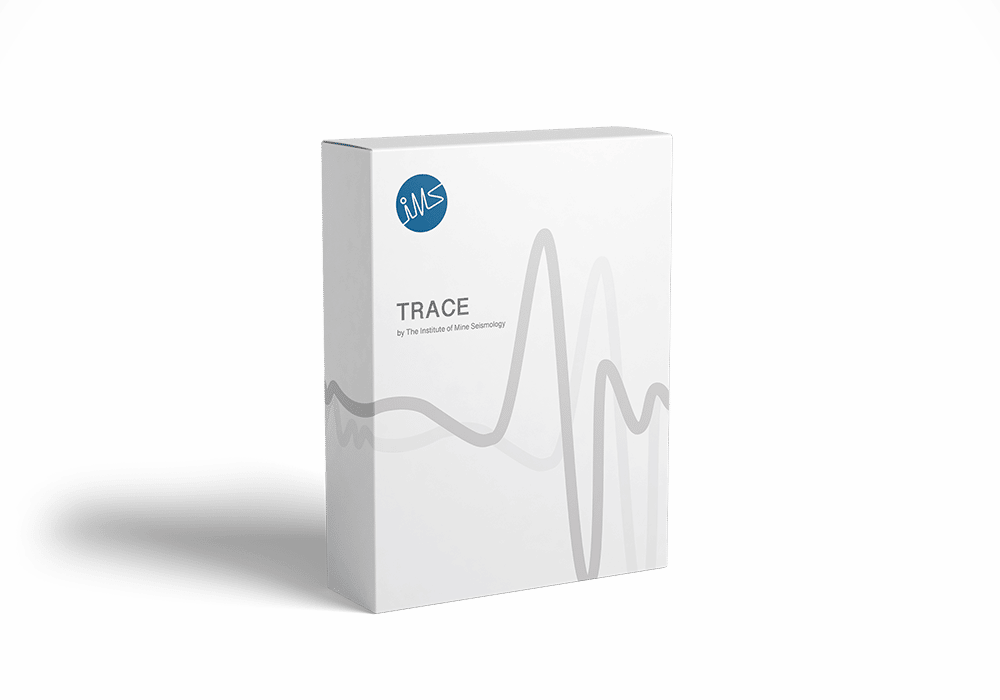Trace
Trace provides tools to derive source parameters from the seismograms recorded by the IMS seismic system. The software is compatible with either Windows or Linux. Interactive functionality includes the picking of phase arrivals in standard or hodogram modes, calculation of the location of earthquakes, and source parameters derived from the spectra of seismic waves. These parameters include radiated seismic energy, co-seismic inelastic deformation and magnitude, as well as focal mechanism solutions (time and frequency domain).

VISUALISATION
Seismograms can be displayed as acceleration, velocity or displacement traces, in standard mode, unrotated modes or polarised modes. Spectra of seismic waves can be analysed to detect noise and adaptively remove it. When integrated with the IMS visualisation software, 3D visualisation options become available, making it possible to view the processed events in the proper context.
PICKING PHASE ARRIVALS
Automatic picking of the body wave arrivals can be performed using one of a variety of techniques, including AIC methods, AR methods and phase polarisation methods. P- and S-wave arrivals can be manually picked if the automatic results are not satisfactory, or if the highest quality data is required.
PREPROCESSING
Trace performs removal of 50/60 Hz noise, which is commonly induced by a ground loop in mining environments. Baseline corrections, instrument response corrections and anti-aliasing are performed to prepare the seismogram for automatic or manual phase picking and subsequent source-parameter calculation.
SOURCE PARAMATERS
Assuming a far-field radiation pattern for sensor sites sufficiently distant from the hypocenter, a spectral analysis of the waveforms from recorded seismograms allow for fitting a standard omega-2 model to the distance-corrected spectra. Static source parameters, such as seismic potency, can then be computed. Dynamic parameters, such as radiated seismic energy, are calculated from energy flux at sensor sites, taking into account inelastic attenuation and geometric spreading. These attenuation parameters can be imposed as fixed parameters, or calculated on the fly. From the resulting set of static and dynamic source parameters, we calculate seismic moment, local magnitude, corner frequencies, static and dynamic stress drops, apparent stress drop and apparent volume.
LOCATION
In the simplest case, location is performed using apparent velocities, which are defined per sensor site, using absolute arrival times or S-P time differences when needed. For complex geology or caving environments, 3D ray-tracing (using a custom-built velocity model) is employed to improve location quality. Usually, a location quality with an error of less than 3% of the average source-site ray path distance is required. Relative location can be employed when good quality events or blasts can be selected as master events.
EXTENSIBILITY
IMS offers plugin modules to add certain specialised functionalities to the software, if required. This may include live Wadati plots and various moment/potency tensor solvers. Please contact us for any special requests you may have.
FILTERING AND EXPORTING
Various ordering and filtering options are available, making it possible to filter the view of data according to specific source parameter values. It is then possible to export data to text format for use in standard spreadsheet software, or export seismograms to raw ASCII and other formats for external use.
IMS TRACE
Click here to download trace.
